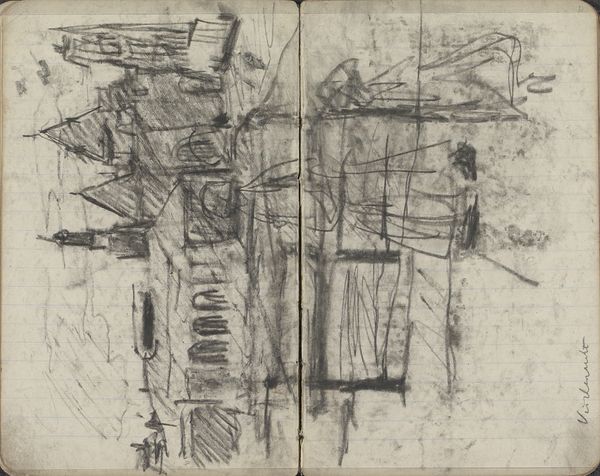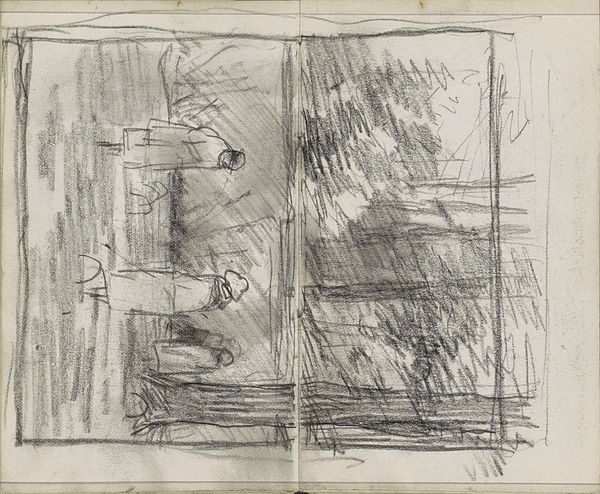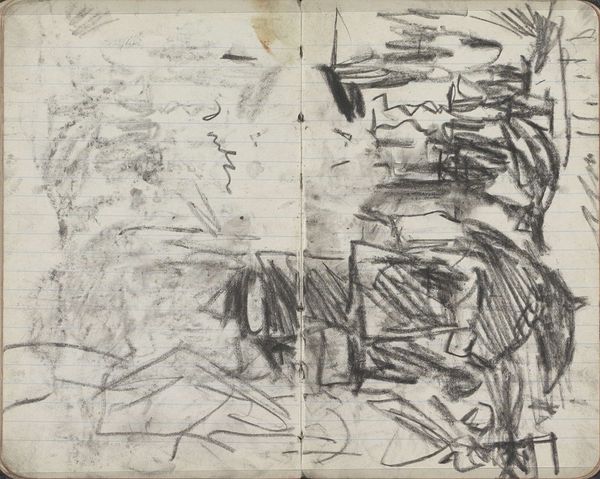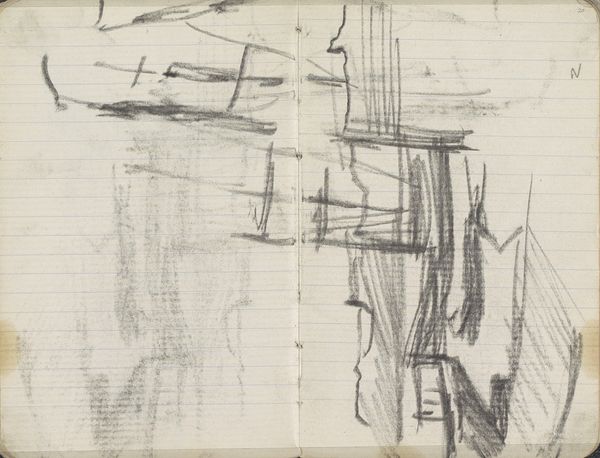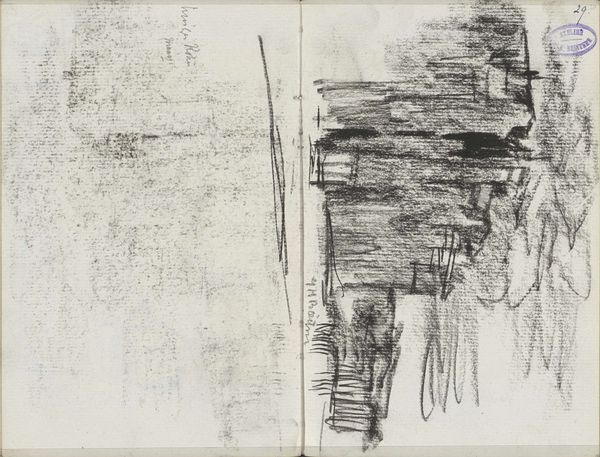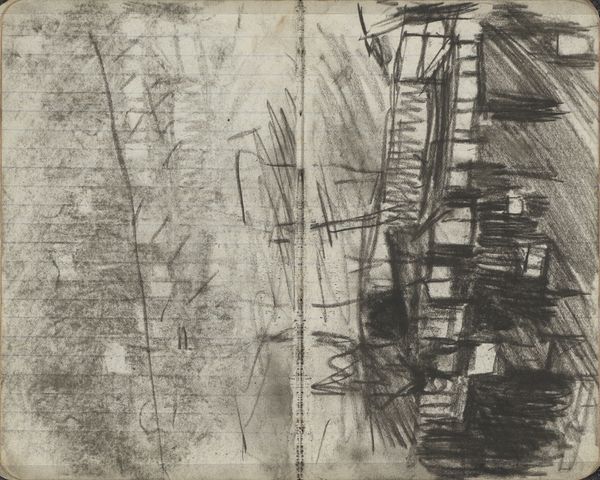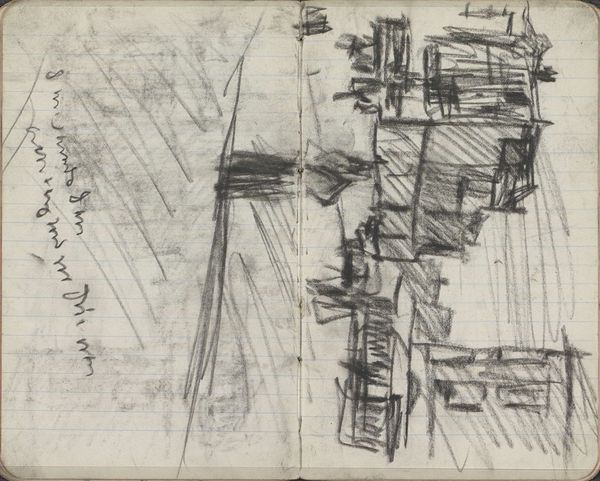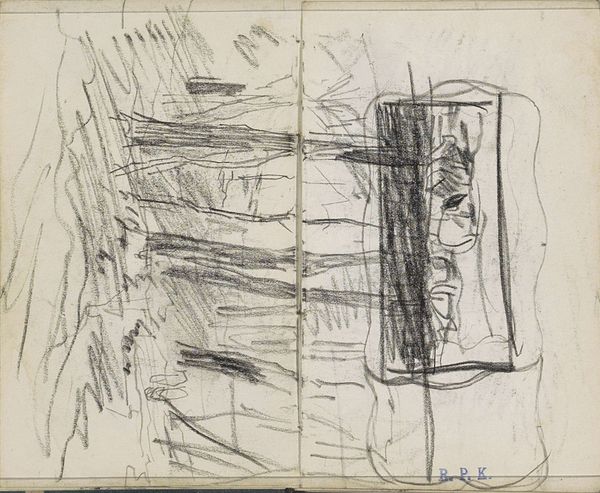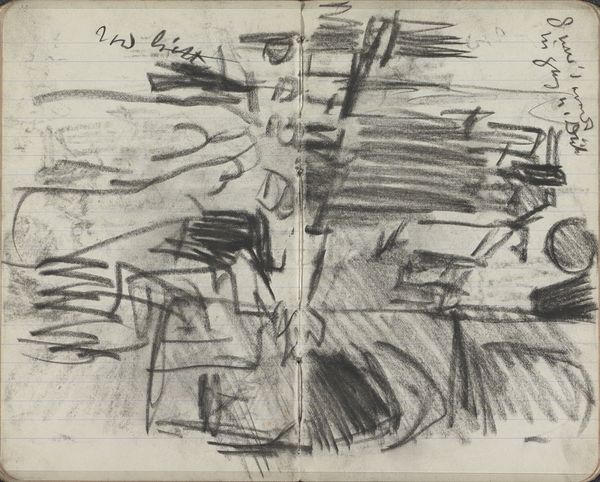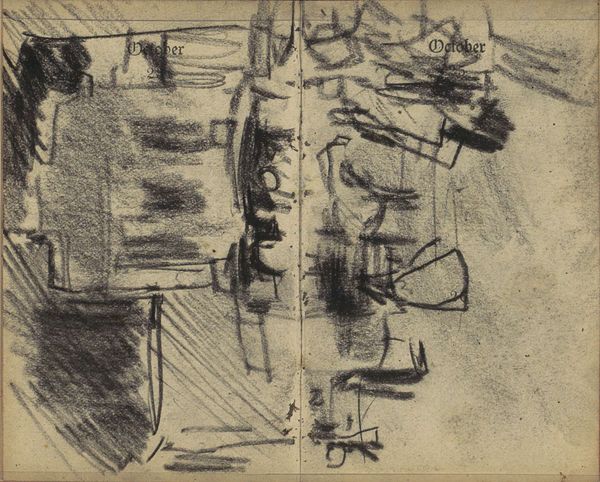
Copyright: Rijks Museum: Open Domain
Curator: Before us, we have a sketchbook page by George Hendrik Breitner, dating from 1893 to 1898, titled “Gezicht op de Nieuwendijk te Amsterdam.” It’s rendered in pencil and graphite. What is your immediate impression? Editor: Chaos, frankly. At first glance, it feels like an overwhelming jumble of lines and forms struggling to emerge. The density suggests the bustling, relentless energy of city life, yet its unfinished nature gives it a melancholic feel. Curator: Indeed. The incompleteness contributes to its potent symbolic weight, doesn’t it? Think of the "Nieuwendijk" as a vital artery, pulsing with commerce and human interaction. Breitner has captured its essence rather than its explicit details. The book itself invites one to reflect on privacy, revealing his thought process. Editor: Absolutely. It feels deeply personal, a fleeting glimpse into Breitner's raw perception. What social forces shaped his vision of Amsterdam in those years? The sketch offers an intersection of his internal experience and external reality during a time of massive social and economic change. I imagine the city as a nexus point between classes and struggles. Curator: The city itself, like art, then becomes a record of those struggles. The sketchy nature—deliberately unfinished and intimate—points to impressionism. His contemporary viewers were also experiencing rapid social change; did this in part inform their receptivity to work that captured the feeling of experience, rather than reality? Editor: It absolutely had to! To depict fleeting moments and not rigidly adhere to representation must have been a break from older academic expectations. Did Breitner choose specific spots along the Nieuwendijk to chronicle these moments of transition, potentially locations known for both opulence and social disparities? Curator: Most likely, yes. This sketchbook functions, perhaps, as both a testament to objective perception and a site for subjective projection, or Breitner's attempt to negotiate new understandings of urban space. We also see that the sketchbook has been opened at two different places at different points, reflecting perhaps shifting desires for subjects, like different desires within society. Editor: It really highlights the multifaceted nature of progress; the city moving forward wasn’t harmonious or complete. We must consider who progress serves. The rough, sometimes distorted lines can symbolize a deeper, systemic inequity. Curator: A reminder of how urban life can simultaneously inspire and overwhelm, reflected here in the immediacy and emotional texture captured through a few seemingly hurried strokes. Editor: Agreed. It encourages one to ponder how those same socioeconomic patterns persist, and how art serves as both record and an invitation to recognize ourselves within the frame.
Comments
No comments
Be the first to comment and join the conversation on the ultimate creative platform.
